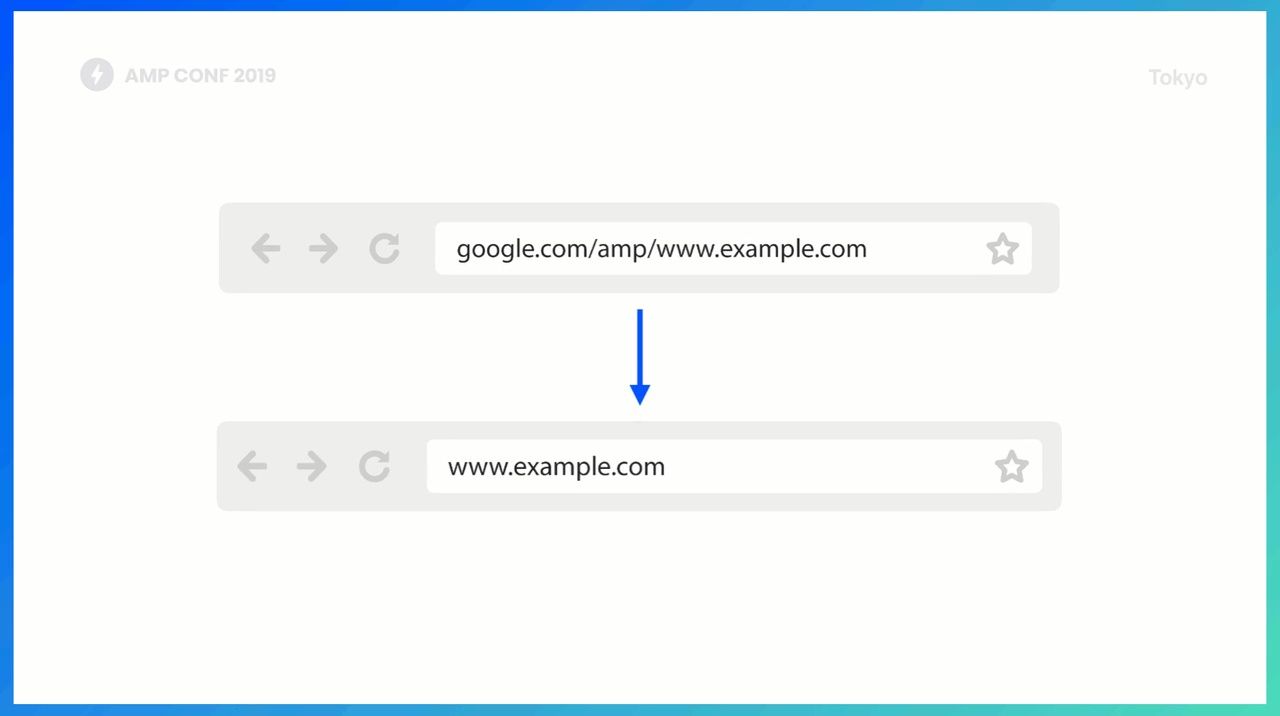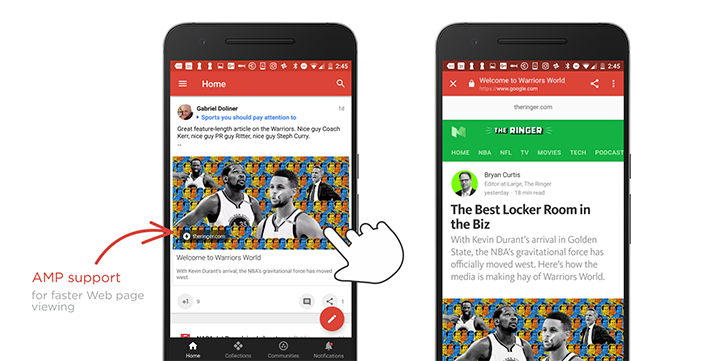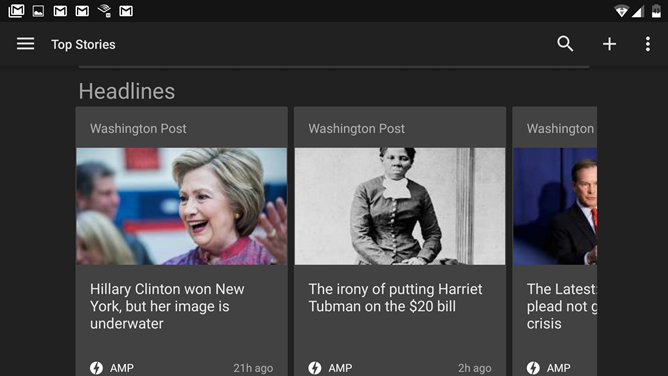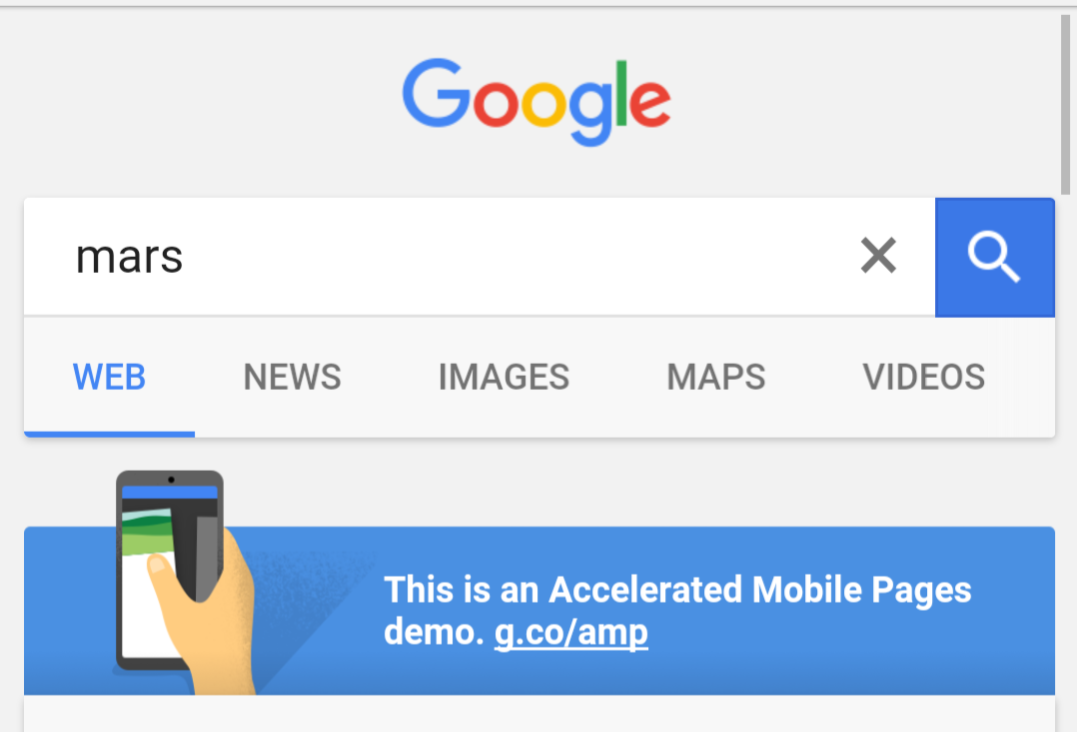latest

Google introduced Accelerated Mobile Pages (AMP) back in 2015 as an attempt to make web pages load faster on mobile devices. While an admirable enough goal, in the years since there's been a lot of pushback regarding both how AMP is implemented and whether it really delivers on those speed promises. Last summer AMP's future really started to look in doubt, as Google began removing the project's lightning bolt symbol from search results and confirmed AMP wouldn't be mandatory for pages to rank well. Now the other shoe's dropping, as major publishers make it clear that AMP isn't just unpopular — some are ready to dump it completely.

Google had its 2019 'AMP Conf' in Tokyo today, and announced a series of changes and new features coming to the company's Accelerated Mobile Pages project. The most important announcement was that AMP pages will now show the original URL in the address bar, which should solve the platform's greatest point of confusion — but it's only making things worse if you don't like AMP.

Love it or hate it (I hate it), Google AMP is expanding faster than ever. It's no longer just an optimized way to make mobile web pages, as it now powers interactive content in Gmail. 'AMP Stories,' a way of creating interactive news stories, was announced over a year ago — and it's about to roll out to everyone.

One of many useful features in Google Search, 'featured snippets' pulls answers to common, simple questions from relevant web pages and puts them front and center when you enter a query. Usually, tapping through to the article Google got the answer from does nothing other than take you to that page, but new behavior has been observed whereby it will scroll you to the snippet on that page.

Accelerated Mobile Pages, or AMP for short, has been a controversial project at Google since it was initially announced. The lack of any opt-out mechanism, poor cross-browser compatibility, and Google's de-prioritization of AMP-less sites in search results are all major problems. However, the platform might improve in the coming months, as AMP will no longer be fully under Google's control.

The mobile web can be frustrating. Smartphones and tablets are becoming faster every year, but modern sites usually outpace them by becoming more complicated. While there are efforts to improve site load times, smartphones have to deal with other obstacles as well. Cellular network connections can become congested, especially in densely-populated areas, and budget phones often aren't speedy enough for a good browsing experience.

Google launched the AMP Project (Accelerated Mobile Pages) back in 2015 in an attempt to speed up the mobile web. It's had its share of teething problems, but it's mostly been a success with its implementation in Search and the Google Feed. Last summer, it was reported that Google was working on "Stamp," which would combine AMP pages with an interactive storytelling element. That project has now come to fruition, with the announcement of AMP Stories.

Even if you've never heard of AMP (Accelerated Mobile Pages), you've probably already come across them several times online without realizing it — and you might have even been put off by one of its minor annoyances. The AMP project was created by Google in 2016 as yet another initiative to make online browsing faster and more responsive. Put simply, it works by making an educated guess on which pages a user is likely to visit next and begin preloading them before they do — for example, by preloading the first Google Search links in the background. I guess you could liken it to a sort of speculative execution for webpages, minus the Earth-shattering security vulnerabilities.

Back in February of last year, Google unveiled Accelerated Mobile Pages - or AMP, for short. In a nutshell, sites can choose to generate AMP versions of their pages (with an automated tool or site plugin), which load extremely quick compared to normal sites. This is due to various restrictions, compression on the included images/video, and caching by Google's own servers.

Google's Accelerated Mobile Pages (AMP) project is a decent idea, with not-so-great execution. AMP pages are designed to be extremely lightweight and load almost instantly, as a solution to mobile web sites being generally terrible. Sites have to opt-in to generating AMP pages of all existing pages, which Google then caches on its own servers for faster loading.

If you're not familiar, Google's Accelerated Mobile Pages project aims to make the mobile web faster and less data-heavy. Websites that choose to support it offer AMP versions of their pages, which are then loaded instead of the full site. Google mobile search and the mobile Google+ site already load AMP pages when available, and now the latter's native Android app is joining in.

The Accelerated Mobile Pages standard is slowly proliferating across the web, to the delight of users on metered or slow connections. The "AMP" sites, implemented for large media outlets at the moment, dynamically reformat pages to shrink images, improve readability, and bring load times down to just a second or two even on a slow mobile network. The latest service to get access to the tool is the web-accessible version of Google+. Users on mobile Chrome and other browsers should start seeing the lightning bolt icons for AMP stories (in the lower left of the image above) starting now.

If you have never heard of Google's Accelerated Mobile Pages Project, it's exactly what it sounds like. AMP documents are minimal web pages, with the same basic HTML syntax, designed to load as quickly as possible (even at the cost of some functionality). Web developers can create AMP versions of their webpages, with Google mirroring every page on its own servers for the quickest load times possible. For example, here is the AMP version (left) and normal mobile site (right) from Forbes:

Read update
Google's Accelerated Mobile Pages is a neat idea system that automatically reformats an HTML web page into a light and speedy version ripe for consumption on mobile phones and potentially strained connections. It's a sort of mix between the old dedicated mobile sites (which are often broken and lacking in features) and the newer dynamic formatting (which can be too heavy for a phone browser even when written correctly). The AMP system has been going for a few months now, and Google claims that it has "thousands" of publishers on board.

We first spotted the rollout yesterday, but today Google made it official that its AMP initiative will be enjoying a wide launch effective immediately. AMP, which stands for Accelerated Mobile Pages, is a new feature to Google's search interface on mobile browsers that will load an optimized version of news articles far more efficiently than the conventional way of navigating to a separate webpage. While Google emphasizes that there is much more to be done, it is going to be prioritizing compatible news and displaying the AMP wording and lightning bolt logo in mobile search by default.

Toward the end of last year Google began testing a way to make webpages load faster when you're on a mobile device. How fast? Instantly, ideally. Or at least no more than a second or two. Google calls these quickly-loading sites Accelerated Mobile Pages.








